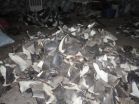(Press-News.org) Using a combination of Facebook-like tools and personally controlled health records, researchers at Children's Hospital Boston have engaged members of an online diabetes social network as participants in public health surveillance. In an article published April 27 in PLoS ONE, Elissa Weitzman, ScD, MSc, and Kenneth Mandl, MD, MPH, of the Children's Hospital Informatics Program (CHIP) show that health-focused social networks can be viable resources for chronic disease surveillance.
"There is growing recognition that online communities not only provide a place for members to support each other, but also contain knowledge that can be mined for public health research, surveillance, and other health-related activities," said Mandl, director of the Intelligent Health Laboratory at CHIP and co-principal investigator of the project along with Weitzman.
Members of TuDiabetes.org were invited to participate in a "data donation drive" and share data about their hemoglobin A1c (or A1c) status, a health metric used to measure diabetes control over a prolonged period of time.
Through an application called TuAnalyze, based on CHIP's Indivo personally controlled health record, TuDiabetes members were able to share their health data anonymously or publicly. All of the submitted data was aggregated and displayed on state- or country-level maps in near real-time.
"We were hoping to gauge the community's willingness to share their personal data for public health surveillance," said Mandl, an associate professor at Harvard Medical School,"and give them a tool that allowed them to securely share their data, all the while supporting socially-based encouragement and a sense of community activism."
Within three months, 17 percent of total active TuDiabetes members and 21 percent of active users in the United States had signed on to TuAnalyze. Among all TuAnalyze users, 81.4 percent chose to share their A1c data in aggregate, while 34.1 percent also chose to display their personal A1c data on their TuDiabetes profile. The average unadjusted A1c reported by TuAnalyze users in the United States was comparable to that reported in the most recent National Health and Nutrition Examination Survey (NHANES) by the Centers for Disease Control and Prevention (CDC).
Early adopters (i.e., those who signed on to TuAnalyze within the first two weeks of launch) reported lower average A1c values than those signing onto the application later, as did members who shared their A1c data openly on their TuDiabetes profiles versus those who only shared their data in aggregate, and members who shared multiple A1c values versus those who only shared one.
"TuAnalyze has allowed the members of TuDiabetes that have used it to share their diabetes data and connect as a community around it," said Manny Hernandez, founder of TuDiabetes and president of the Diabetes Hands Foundation, the nonprofit that runs the site. "This application has given us an initial glimpse of the kinds of things we can learn as a community, and caused us to focus our time and resources on matters that are pressing and relevant to our members."
Mandl commented that, "Our experience with this project tests certain fundamental assumptions about how we can conduct science across populations, including people's willingness to share data for public health research for their community, as opposed to for themselves, and what we need to do to encourage that. In this instance, we have demonstrated a tool that respects member confidentiality preferences while securely allowing aggregation of data to benefit the community at large."
"While they produce high-quality data, large, structured population-based reporting systems are not nimble, and provide no opportunity for interaction or feedback," added Weitzman, an assistant professor at Harvard Medical School. "Science is changing and there is emerging an expectation and desire among participants for a continued research relationship and an opportunity to learn more about their own disease, for which online networks provide a platform."
Weitzman noted, "If we are serious about understanding and ameliorating disease, we need to find a way to engage entire populations in health research cost-efficiently, to understand the experience and patterns of illness and the ways in which patient populations are undertaking and responding to treatments."
Going forward the CHIP team is collecting more complex data on quality of care and adverse events within the population using TuAnalyze and exploring how to engage the community in a more permanent and longitudinal way.
TuAnalyze was developed with support from the U.S. Centers for Disease Control and Prevention.
###
Children's Hospital Boston is home to the world's largest research enterprise based at a pediatric medical center, where its discoveries have benefited both children and adults since 1869. More than 1,100 scientists, including nine members of the National Academy of Sciences, 12 members of the Institute of Medicine and 13 members of the Howard Hughes Medical Institute comprise Children's research community. Founded as a 20-bed hospital for children, Children's Hospital Boston today is a 395 bed comprehensive center for pediatric and adolescent health care grounded in the values of excellence in patient care and sensitivity to the complex needs and diversity of children and families. Children's also is the primary pediatric teaching affiliate of Harvard Medical School. For more information about research and clinical innovation at Children's, visit: http://vectorblog.org.
END
Thousands of members of the public across Europe have taken part in one of the largest evolutionary studies ever, by observing banded snails in their gardens and open public spaces.
More than 6,000 people in 15 European countries took part in the Open University's citizen science project between April and October 2009.
The project, Evolution MegaLab, is an online mass public experiment aimed at bringing Darwinian theory to life. It was launched in April 2009 to mark the 200th anniversary of Charles Darwin's birth.
People were invited to report their sightings of banded ...
In a recent study to be published on April 27, 2011, in the peer-reviewed open-access journal PLoS ONE, Dr. Elliott Hazen and colleagues found that oceanographic and prey measurements can be used to identify beaked whale foraging habitat. The research team from Duke University, Woods Hole, and the Naval Undersea Warfare Center listened for foraging beaked whales and measured ocean features and distributions of prey off the east coast of Andross Island in the Bahamas.
Their manuscript provides evidence that these difficult to study deep-diving creatures use specific ocean ...
Chevy Chase, MD— A recent study accepted for publication in The Endocrine Society's Journal of Clinical Endocrinology & Metabolism (JCEM) found that higher metabolic rates predict early natural mortality, indicating that higher energy turnover may accelerate aging in humans.
Higher energy turnover is associated with shorter lifespan in animals, but evidence for this association in humans is limited. To investigate whether higher metabolic rate is associated with aging in humans, this study examined whether energy expenditure, measured in a metabolic chamber over 24 hours ...
Chevy Chase, MD— A recent study accepted for publication in The Endocrine Society's Journal of Clinical Endocrinology & Metabolism (JCEM) found that while black and white children with vitamin D deficiency both had higher fat levels, black children were more likely to have higher levels of fat just under their skin and white children were more likely to have higher levels of fat between their internal organs.
Studies in adults and children have shown a link between obesity and vitamin D deficiency. However, data characterizing the racial differences in the relationship ...
PROVIDENCE, R.I. [Brown University] — Like people with a big choice to make, stem cells have a process to "decide" whether to transform into a specific cell type or to stay flexible, a state that biologists call "pluripotency." Using a technology he invented, Brown researcher William Fairbrother and colleagues have discovered new molecular interactions in the process that will help regenerative medicine researchers better understand pluripotency.
In a paper published in advance online in the journal Genome Research, Fairbrother's team showed that different proteins called ...
A land of outstanding natural beauty, breathtaking views and unrivalled service levels, it's little wonder that Switzerland is such a popular choice for Headwater customers wanting to combine activity by day with luxury in the evenings.
For 2011, we have both walking and cycling holidays available. We've listed our 6 most popular choices below - and, if you book any of these within the next 14 days, we'll send you a luxury Lindt chocolate hamper just to say "thank you"!
Favourite for Foodies: Walking in Davos
The elegant **** Hotel Meirhof is your base ...
MEDFORD/SOMERVILLE, Mass. – Colonoscopy is regarded as the most thorough way to screen for colon cancer but the potentially life-saving procedure can also be painful. Scientists and engineers are continually researching new methods of screening to reduce patient discomfort while also ensuring the accuracy of the exam. Researchers at Tufts University's School of Engineering led by Associate Professor of Mechanical Engineering Caroline G.L. Cao, Ph.D., have developed a device that could potentially do both.
Tufts endoscopic fiber optic shape tracker (EFOST) technology ...
STONY BROOK, NY, April 27, 2011–An international team of scientists, led by the Institute for Ocean Conservation Science at Stony Brook University, has used DNA to determine that groups of dusky sharks (Carcharhinus obscurus) and copper sharks (Carcharhinus brachyurus) living in different coastal regions across the globe are separate populations of each species. Both are large apex predators that are heavily exploited for the shark fin trade, which claims tens of millions of animals every year to produce the Asian delicacy, shark fin soup. Many of these species are declining ...
Fruit flies that moved from sub-Saharan Africa found themselves confronted by conditions very different from those to which they were accustomed. Most obviously, the average temperatures were considerably lower and so it is no surprise that the flies had to adapt to cope with life in the north. As a result of thousands of years of evolution, populations in sub-Saharan African and in Europe now differ dramatically in a number of characteristics known to relate to temperature (such as pigmentation, size and resistance to cold). Schlötterer's previous work had suggested ...
When you are plagued by unsightly facial lines and wrinkles, nothing can be more satisfying than immediate correction with dermal fillers. Dermal fillers consist of biocompatible materials, such as concentrated hyaluronic acid, that are injected beneath the skin to enhance subtle contours and soften facial creases and wrinkles brought on by old age. If you would like to regain your youthful appearance without the downtime required for facelift surgery, dermal fillers may be right for you.
How to Select a Dermal Filler For Your Needs
There are dozens of dermal fillers ...

